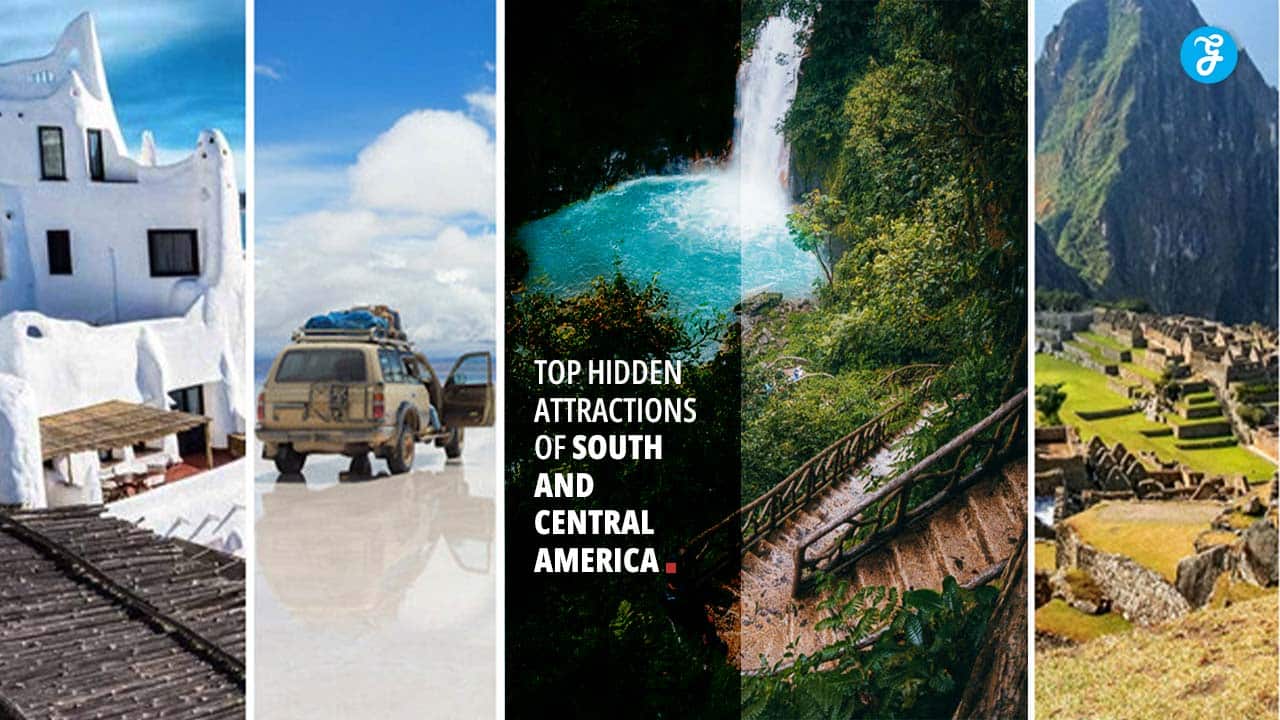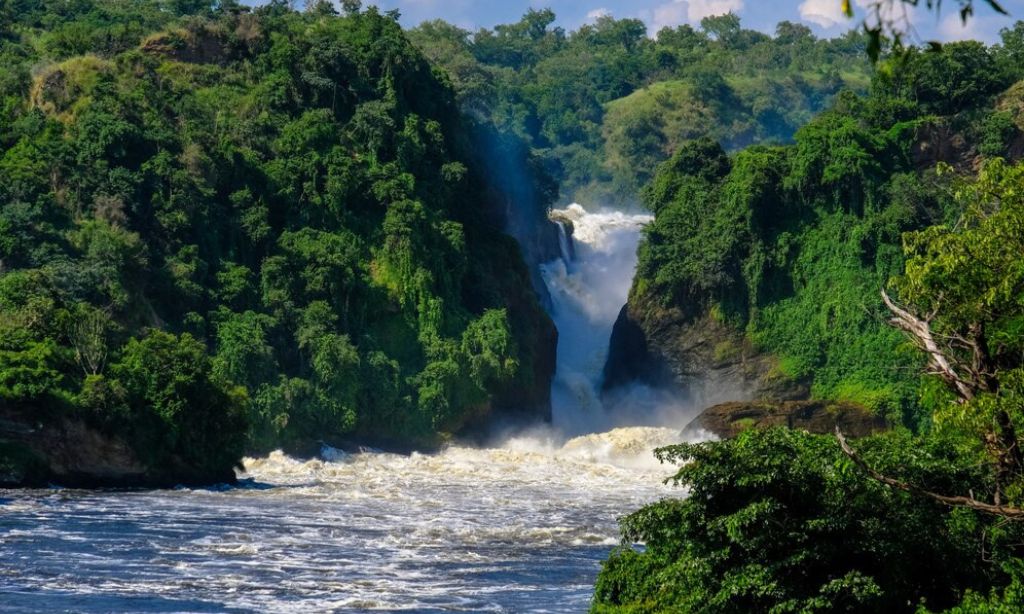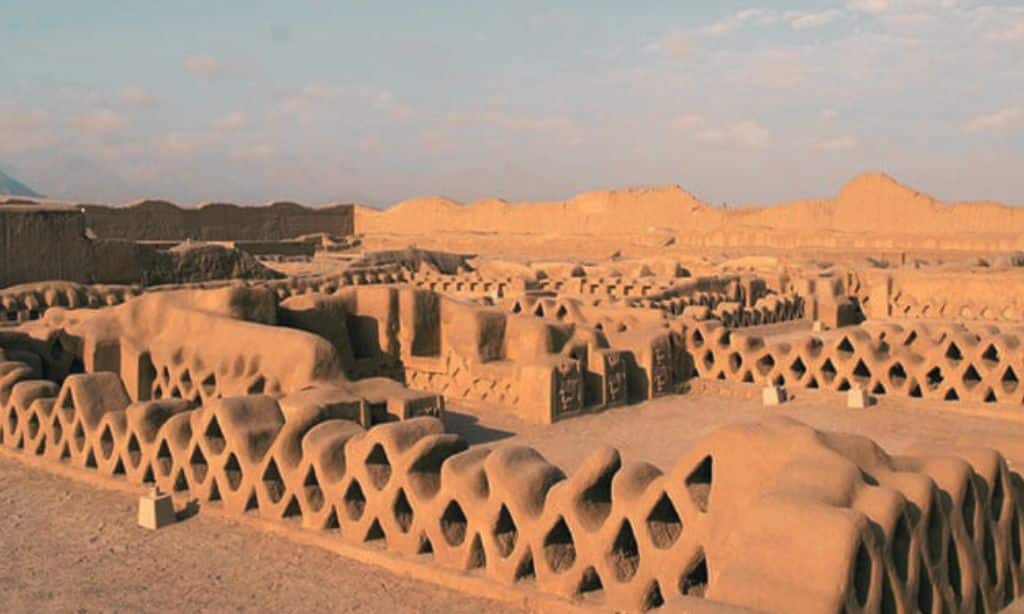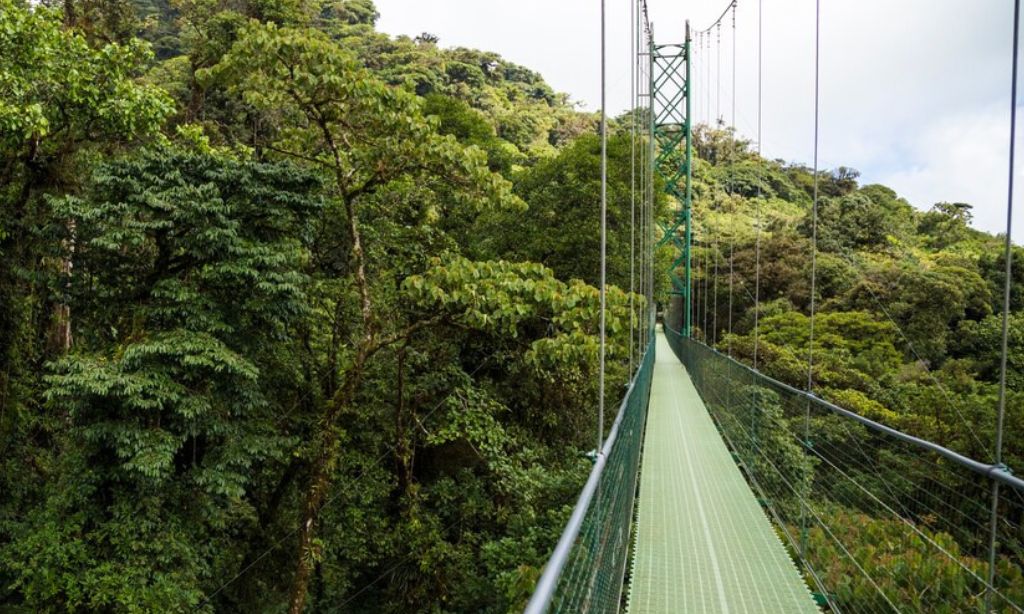Imagine standing at the edge of a towering waterfall, four times higher than Niagara, with not another soul in sight. Picture yourself walking on a rainbow-colored mountain or floating in a crystal-clear lagoon nestled between towering sand dunes. These aren’t scenes from a fantasy novel – they’re real places waiting to be discovered in South and Central America.
While millions flock to Machu Picchu or Rio’s beaches each year, the true magic of these diverse continents often lies in their lesser-known corners. From the depths of the Amazon to the heights of the Andes, from Caribbean islands to Patagonian glaciers, South and Central America are brimming with hidden wonders that will take your breath away.
In this article, we’ll take you on a virtual journey to 20 of the most spectacular yet underappreciated attractions these regions have to offer. Whether you’re an adventure seeker, a nature lover, or a culture enthusiast, these hidden gems will inspire your next great adventure and show you a side of South and Central America you never knew existed.
So, pack your imagination and let’s embark on a trip to some of the most extraordinary places you’ve probably never heard of – but will never forget once you’ve seen them.
Hidden Attractions in South America
1. Kaieteur Falls, Guyana
Nestled deep in the heart of Guyana’s pristine rainforest, Kaieteur Falls is a testament to nature’s raw power and beauty. This single-drop waterfall plunges 741 feet (226 meters) over a sandstone cliff, making it one of the most powerful waterfalls in the world.
What makes Kaieteur truly special is its remoteness. Unlike many famous waterfalls, you won’t find bustling gift shops or crowded viewing platforms here. Instead, you’ll experience the falls in near solitude, surrounded by the sounds of the jungle and the thunderous roar of water.
The best time to visit is during the rainy season (May to August) when the falls are at their most powerful. However, the dry season (February to April) offers better chances of clear skies and rainbow sightings.
Fun fact: The falls are named after Kai, a Patamona chief who sacrificed himself by canoeing over the falls to save his people from the warlike Caribs.
2. Lençóis Maranhenses National Park, Brazil
Imagine a desert where freshwater pools nestle between towering sand dunes. This surreal landscape is not a mirage, but the reality of Lençóis Maranhenses National Park in northeastern Brazil.
Covering an area of about 1,500 square kilometers, the park features an expanse of tall, white sand dunes interspersed with crystal-clear rainwater lagoons. The contrast between the pristine white sand and the blue and green waters creates a mesmerizing vista that seems almost too perfect to be real.
The best time to visit is between July and September when the lagoons are full after the rainy season. You can trek across the dunes, swim in the refreshing pools, and witness stunning sunsets that paint the landscape in a palette of warm hues.
Interesting tidbit: Despite its desert-like appearance, Lençóis Maranhenses is not technically a desert. It receives too much rainfall to qualify, with an average annual precipitation of 1,600 millimeters.
3. Huacachina Oasis, Peru
In the middle of Peru’s coastal desert lies a sight straight out of a fairy tale: the tiny village of Huacachina, built around a natural desert oasis. This small settlement of about 100 permanent residents feels like a mirage, with its palm trees, rustic hotels, and a picturesque lagoon surrounded by towering sand dunes.
Huacachina offers a unique blend of relaxation and adventure. You can lounge by the lagoon, enjoying the surreal view of sand dunes rising in every direction, or get your adrenaline pumping with sandboarding and dune buggy rides.
The best time to visit is between May and August when temperatures are milder and the skies are clearer. Early morning or late afternoon are ideal for dune activities when the sand isn’t too hot.
Did you know? Local legends say the lagoon was created by a beautiful native princess who was fleeing from a young hunter. She removed her mirror to look behind her, and it became the lagoon. The folds of her mantle, streaming behind her as she ran, became the surrounding sand dunes.
4. Marble Caves, Chile
On the shores of General Carrera Lake in Chilean Patagonia, you’ll find one of nature’s most extraordinary sculptures: the Marble Caves. Also known as the Marble Cathedral, these stunning formations have been shaped by water erosion over thousands of years.
The caves are actually composed of calcium carbonate, not marble, but their smooth, swirling patterns resemble polished marble. What makes them truly spectacular is how they change color with the seasons and water levels. The reflected light can make the caves appear turquoise, deep blue, green, or even pink.
The best way to experience the Marble Caves is by boat or kayak. The optimal time to visit is between September and February when the water levels are lower, revealing more of the caves’ intricate formations.
Fascinating fact: The water of General Carrera Lake comes from glacial melt, which gives it its striking blue color and contributes to the unique appearance of the caves.
5. Caño Cristales, Colombia
Known as the “River of Five Colors” or “Liquid Rainbow,” Caño Cristales in Colombia’s Serranía de la Macarena National Park is one of the most spectacular rivers in the world. For a few months each year, this river transforms into a kaleidoscope of colors: red, yellow, green, blue, and black.
This natural phenomenon is caused by a unique aquatic plant called Macarenia clavigera. When conditions are right, this plant blooms in vibrant shades of red, contrasting beautifully with the river’s yellow and green sand, blue water, and black rocks.
The best time to witness this colorful spectacle is between July and November, with September and October usually being the peak months. Visitors can take guided tours to explore the river and its surroundings, which are also home to a diverse array of wildlife.
Interesting note: To protect this delicate ecosystem, visitor numbers are limited, and the use of sunscreen and insect repellent in the water is prohibited.
Hidden Attractions in Central America
6. Semuc Champey, Guatemala
Hidden in the lush jungles of central Guatemala, Semuc Champey is a natural wonder that seems almost too beautiful to be real. This site features a 300-meter limestone bridge under which the Cahabón River flows. Atop this natural bridge is a series of stepped, turquoise pools that have become a paradise for swimmers and nature lovers.
Visitors can spend the day swimming in the crystal-clear pools, exploring nearby caves, or hiking to a viewpoint for a breathtaking panorama of the entire area. The surrounding jungle adds to the secluded, paradise-like atmosphere.
The best time to visit is during the dry season (November to April) when the water is clearer and the trails are easier to navigate. However, the lush green surroundings during the rainy season (May to October) offer a different kind of beauty.
Fun fact: The name “Semuc Champey” means “where the river hides under the earth” in the local Q’eqchi’ language.
7. Caye Caulker, Belize
Off the coast of Belize lies Caye Caulker, a small Caribbean island that epitomizes the laid-back beach lifestyle. With its motto “Go Slow,” this island is the perfect antidote to the hustle and bustle of modern life.
Despite its small size (5 miles long and less than 1 mile wide), Caye Caulker offers a wealth of activities. You can snorkel or dive in the nearby Belize Barrier Reef, the second-largest coral reef system in the world. The island is also famous for its “Split,” a narrow channel that divides the island and provides a popular swimming spot.
One of the most unique experiences is swimming with nurse sharks and stingrays at Shark Ray Alley. Don’t worry – these creatures are used to human interaction and are generally harmless.
The best time to visit is between December and April, during the dry season. However, if you don’t mind occasional rain showers, the off-season (May to November) offers fewer crowds and lower prices.
Interesting tidbit: There are no cars on Caye Caulker. The primary modes of transportation are bicycles and golf carts.
8. Ometepe Island, Nicaragua
Rising from the waters of Lake Nicaragua, Ometepe Island is a place of myth and natural beauty. Formed by two volcanoes – Concepción and Maderas – this island is shaped like a figure eight and offers a unique blend of nature, adventure, and cultural experiences.
Visitors can hike up either volcano (Concepción for a challenging climb with panoramic views, Maderas for a cloud forest experience and a crater lake), kayak in the lake, or cycle around the island. The island is also home to pre-Columbian petroglyphs and a rich biodiversity, including howler monkeys and a variety of bird species.
The best time to visit is during the dry season (November to May) when hiking conditions are optimal. However, the rainy season (June to October) offers lush, green landscapes.
Did you know? Ometepe Island was designated a UNESCO Biosphere Reserve in 2010 due to its unique ecosystem and sustainable development practices.
More Hidden Gems Across Both Regions
9. Tayrona National Park, Colombia
Where the jungle meets the Caribbean Sea, Tayrona National Park offers a perfect blend of lush forests, pristine beaches, and ancient ruins. Located on Colombia’s northern coast, this park is a haven for nature lovers and adventure seekers alike.
Visitors can hike through dense rainforest trails, spotting exotic wildlife like howler monkeys and colorful birds along the way. The trails lead to secluded coves with crystal-clear waters perfect for swimming and snorkeling. One of the most popular beaches, La Piscina, offers calm waters protected by a natural coral reef.
For history enthusiasts, the park is home to Pueblito Chairama, an archaeological site featuring the remains of an ancient Tayrona civilization. This pre-Columbian town is connected to the famous Lost City (Ciudad Perdida) by an ancient stone path.
The best time to visit is during the dry season (December to April) when the weather is more predictable and the seas are calmer. However, the park is closed every February for ecological restoration.
Interesting fact: Tayrona National Park is home to the Sierra Nevada de Santa Marta mountain range, the world’s highest coastal mountain range.
10. Chan Chan, Peru
Step back in time at Chan Chan, the largest pre-Columbian city in South America. Located near the modern city of Trujillo in northern Peru, Chan Chan was once the capital of the Chimú Empire, which flourished from about 900 to 1470 AD before falling to the Incas.
This vast adobe city covers approximately 20 square kilometers and is a testament to the engineering and artistic skills of the Chimú people. The city is divided into nine citadels, each with its own plazas, dwellings, and burial platforms. The walls are adorned with intricate friezes depicting sea birds, fish, and waves, reflecting the Chimú’s dependence on the ocean.
Visitors can explore the Tschudi Complex, the only citadel open to the public, which includes ceremonial courtyards, burial chambers, and a sophisticated water management system. The on-site museum provides valuable context about Chimú culture and the city’s history.
The best time to visit is during the dry season (May to October) when there’s less chance of rain damaging the adobe structures. Early morning or late afternoon visits offer the best light for photography and cooler temperatures.
Did you know? Chan Chan was designated a UNESCO World Heritage site in 1986, but it’s also on the List of World Heritage in Danger due to the fragility of its earthen architecture.
11. Laguna Colorada, Bolivia
High in the Bolivian Andes, at an altitude of 4,278 meters, lies the otherworldly Laguna Colorada. This shallow salt lake is known for its striking red color, caused by red sediments and pigmentation of certain algae.
The lake is part of the Eduardo Avaroa Andean Fauna National Reserve and is home to three species of flamingos, including the rare James’s flamingo. The contrast between the red water, white borax islands, and pink flamingos creates a surreal, almost Martian landscape.
Best time to visit: May to November, during the dry season, when roads are more accessible.
Fun fact: The lake changes color from deep red to orange depending on the sediments and temperature.
12. Tikal, Guatemala
While not entirely unknown, Tikal’s remote location in the Guatemalan rainforest makes it less visited than other Mayan sites. This ancient city was one of the most powerful kingdoms of the ancient Maya.
Tikal’s most impressive features are its six exceptionally tall temples. Temple IV, the tallest pre-Columbian structure in the Americas, offers a breathtaking view over the jungle canopy.
Best time to visit: December to March for drier weather, but be prepared for crowds. May to November is wetter but less crowded.
Interesting tidbit: Tikal was featured as a Rebel base in Star Wars: Episode IV – A New Hope.
13. Los Roques Archipelago, Venezuela
This national park consists of about 350 islands, cays, and islets in the Caribbean Sea, about 80 miles north of Caracas. It’s a paradise for snorkeling, diving, and beach lovers, with pristine white sand beaches and crystal-clear turquoise waters.
The archipelago is home to a diverse array of marine life, including sea turtles, dolphins, and countless tropical fish species. The main island, Gran Roque, is the only inhabited island and serves as a base for exploring the surrounding cays.
Best time to visit: December to April for the driest weather and best visibility for diving.
Did you know? Los Roques is one of the largest marine parks in the Caribbean Sea, covering approximately 221,120 hectares.
14. Quilotoa Crater Lake, Ecuador
This stunning emerald green lake fills a volcanic crater in the Andes Mountains. The caldera was formed by the collapse of a volcano following a catastrophic eruption nearly 800 years ago.
Visitors can hike around the crater rim, enjoying spectacular views of the lake and surrounding Andean landscape. For the adventurous, it’s possible to kayak on the lake’s surface.
Best time to visit: June to September for clearer skies, but be prepared for colder temperatures.
Fascinating fact: The lake’s color changes from turquoise to green depending on the mineral content and time of year.
15. Isla del Sol, Bolivia
Located in Lake Titicaca, the world’s highest navigable lake, Isla del Sol (Island of the Sun) is steeped in Incan mythology. According to legend, it’s the birthplace of the sun and the Inca civilization.
The island features Incan ruins, including the sacred rock from which the sun is said to have risen. Visitors can explore ancient trails, visit traditional communities, and enjoy stunning views of the lake and snow-capped Andes.
Best time to visit: May to September for drier weather and clearer skies.
Interesting note: There are no paved roads or motor vehicles on the island; all travel is done on foot or by donkey.
16. Corcovado National Park, Costa Rica
Often described as “the most biologically intense place on Earth” by National Geographic, Corcovado National Park on Costa Rica’s Osa Peninsula is a haven for biodiversity.
The park protects various ecosystems, including lowland rainforests, cloud forests, mangrove swamps, and beaches. It’s home to an incredible array of wildlife, including jaguars, tapirs, scarlet macaws, and four species of monkeys.
Best time to visit: December to April for drier weather, but wildlife viewing is good year-round.
Fun fact: Corcovado is one of the few places in Costa Rica where you can see all four native monkey species in one location.
17. Lençóis, Bahia, Brazil
Not to be confused with Lençóis Maranhenses, Lençóis is a charming colonial town in Bahia, Brazil, serving as the gateway to the Chapada Diamantina National Park.
The town itself is a hidden gem, with cobblestone streets, colorful houses, and a laid-back atmosphere. It’s the perfect base for exploring the surrounding area’s natural wonders, including waterfalls, caves, and table-top mountains.
Best time to visit: April to October for drier weather and better hiking conditions.
Interesting tidbit: Lençóis was once a major diamond mining center in the 19th century, hence the name Chapada Diamantina (Diamond Plateau).
18. Mompox, Colombia
This beautifully preserved colonial town on an island in the Magdalena River feels like stepping back in time. Founded in 1540, Mompox (also spelled Mompós) played a crucial role in Spain’s colonization of northern South America.
The town is known for its well-preserved colonial architecture, intricate ironwork, and rich cultural heritage. It’s also famous for its unique filigree jewelry-making tradition.
Best time to visit: December to March for drier weather and local festivals.
Did you know? Mompox was a major inspiration for Gabriel García Márquez’s novels, including “One Hundred Years of Solitude.”
19. Vilcabamba, Ecuador
Often called the “Valley of Longevity” due to the reputed long lifespans of its inhabitants, Vilcabamba is a tranquil town nestled in the Andes of southern Ecuador.
The town is surrounded by stunning mountain scenery and offers excellent hiking, horseback riding, and bird-watching opportunities. It’s also known for its relaxed pace of life and focus on wellness and natural living.
Best time to visit: June to September for drier weather and better hiking conditions.
Fascinating fact: While claims of extreme longevity have been debunked, the healthy lifestyle and clean environment of Vilcabamba do contribute to the overall well-being of its residents.
20. Chiloé Island, Chile
Off the coast of northern Patagonia lies Chiloé Island, a place of myth, legend, and unique culture. The island is famous for its wooden churches (16 of which are UNESCO World Heritage sites), colorful stilt houses called palafitos, and rich folklore.
Visitors can explore the island’s lush national parks, spot diverse wildlife including blue whales and Magellanic penguins, and experience the unique Chilote culture, a blend of indigenous and colonial influences.
Best time to visit: December to March for warmer weather, but be prepared for some rain year-round.
Interesting note: Chiloé has its own mythology, including the legend of the Caleuche, a ghost ship that sails the archipelago’s channels at night.
Takeaways
As we conclude our journey through the hidden attractions of South and Central America, it’s clear that these regions hold a wealth of wonders waiting to be discovered. From the thunderous Kaieteur Falls in Guyana to the serene beauty of Caye Caulker in Belize, each destination offers a unique blend of natural beauty, cultural richness, and unforgettable experiences.
These hidden gems remind us that the joy of travel often lies in venturing off the beaten path. They offer not just stunning vistas and exciting adventures, but also the chance to connect with local cultures, support sustainable tourism, and create memories that will last a lifetime.
As you plan your next adventure, consider stepping away from the tourist crowds and exploring some of these lesser-known destinations. Whether you’re drawn to the colorful waters of Caño Cristales, the ancient mysteries of Chan Chan, or the otherworldly landscapes of Lençóis Maranhenses, South and Central America have something to offer every type of traveler.
Remember, traveling to these hidden attractions comes with responsibility. Many of these places are ecologically sensitive or culturally significant. As visitors, it’s our duty to tread lightly, respect local customs, and contribute positively to the communities we visit.
The world is slowly reopening after the challenges of the past few years, and there’s a renewed appreciation for the wonders that surround us. Now is the perfect time to dream, plan, and embark on new adventures. So, which of these hidden attractions will you discover first?
Let these extraordinary places inspire your wanderlust and challenge your perceptions of South and Central America. After all, the greatest journeys are often to the places we never knew existed, but once discovered, we can never forget.











































